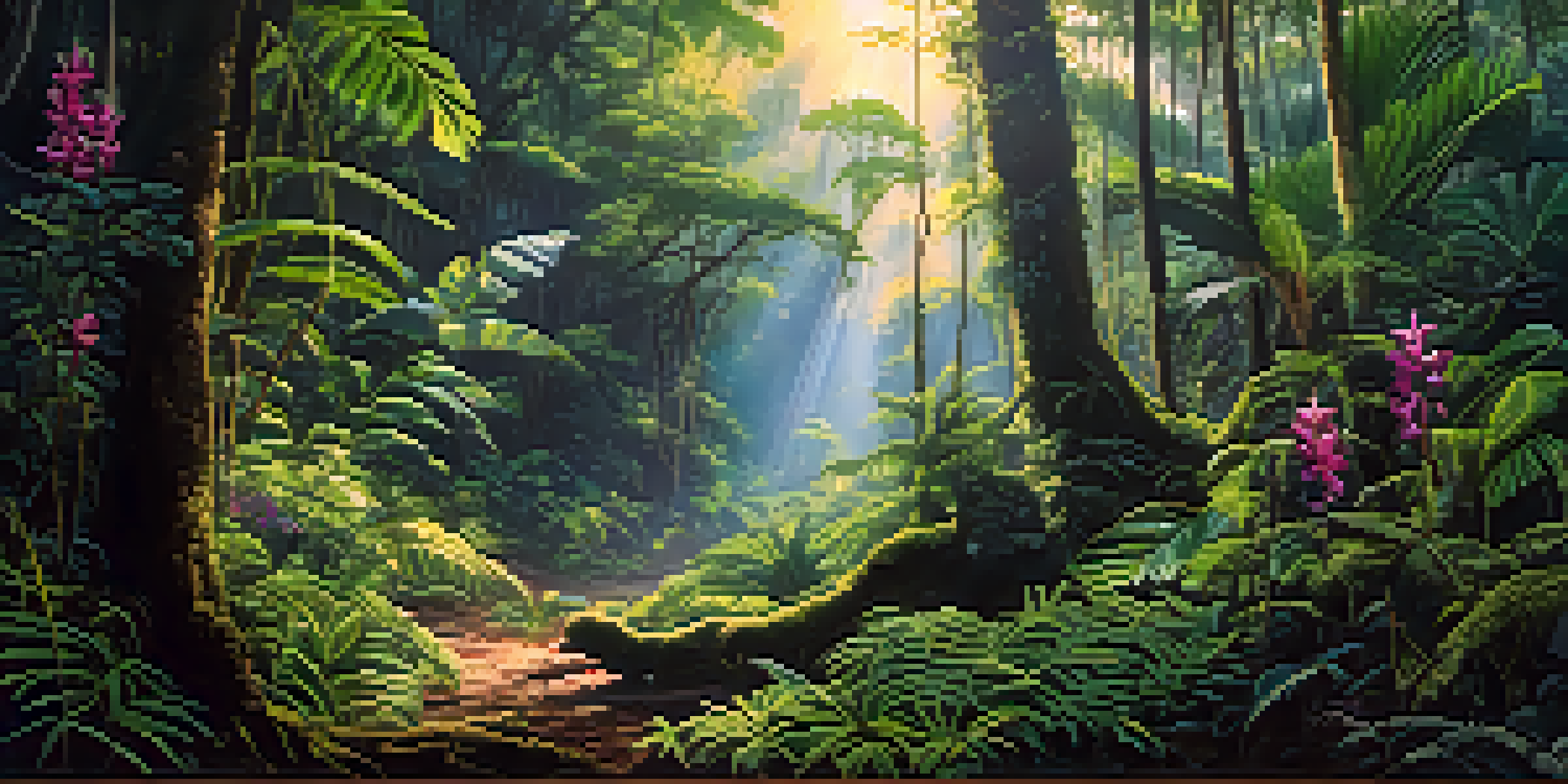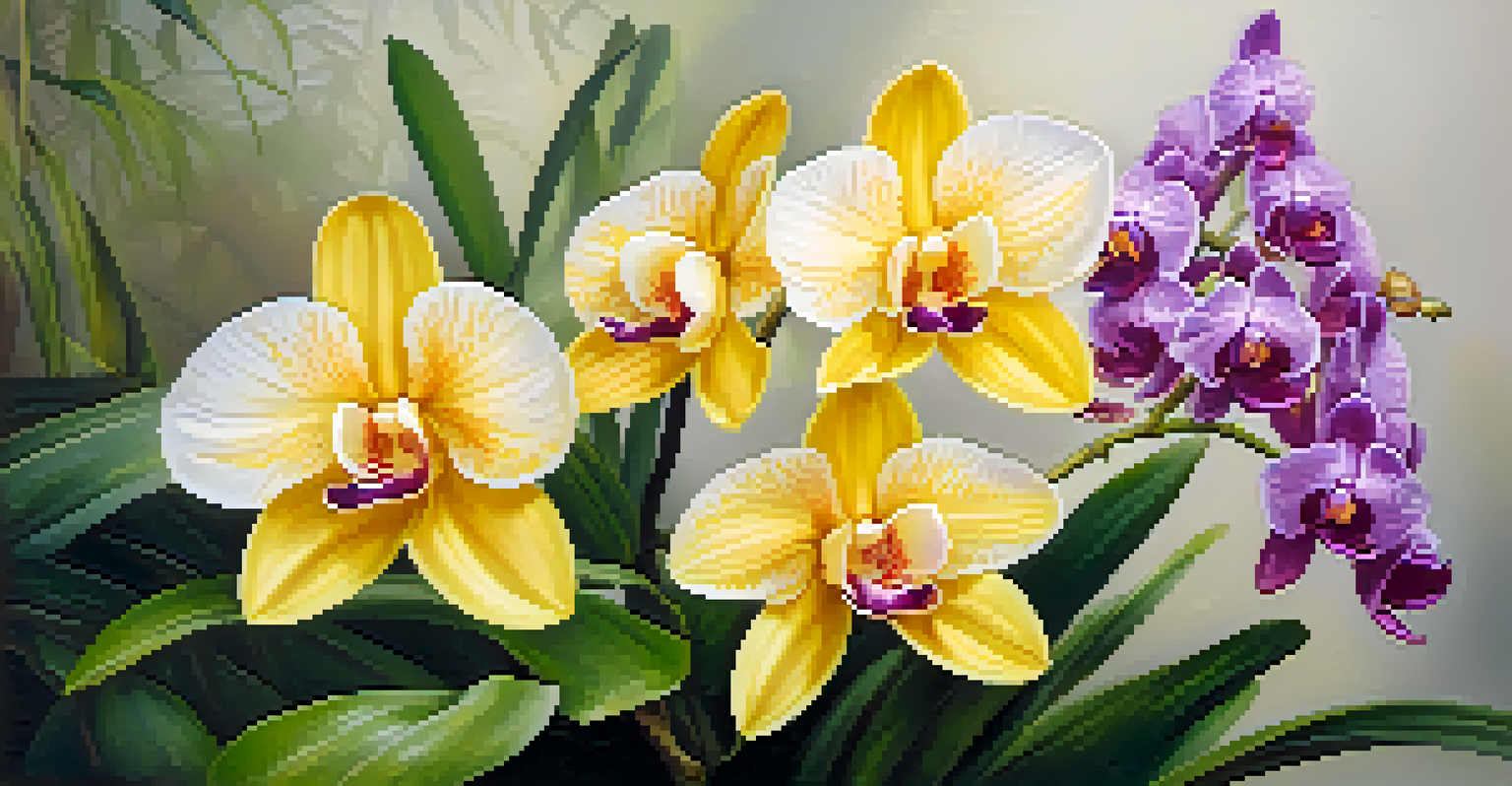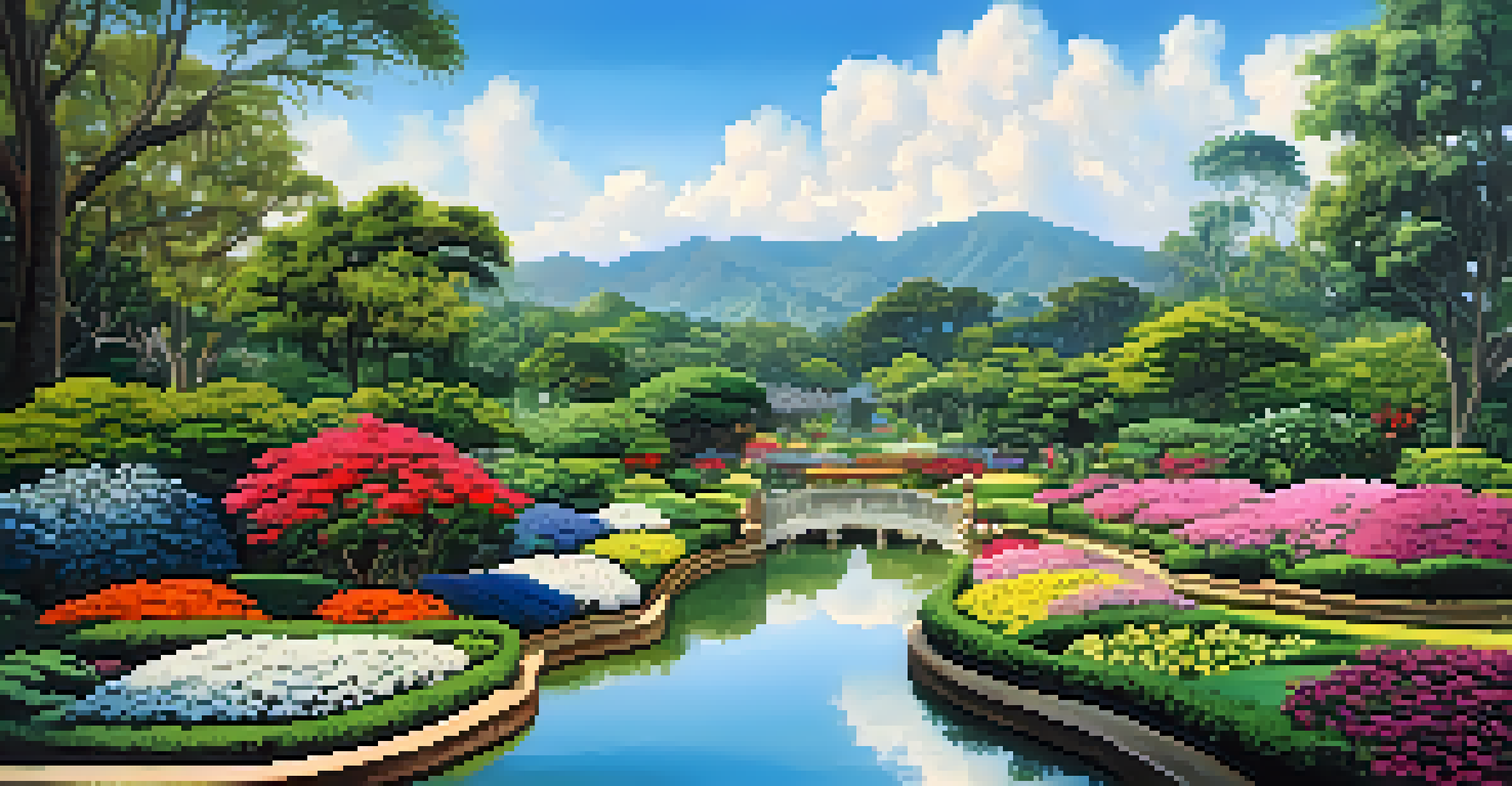Discovering Thailand's Unique Flora: A Botanical Wonderland

An Introduction to Thailand's Rich Botanical Diversity
Thailand is not just known for its stunning beaches and vibrant culture; it’s also a treasure trove of unique flora. With its diverse ecosystems ranging from tropical rainforests to mountainous regions, the country boasts a rich variety of plant species. This botanical diversity is crucial, as it supports both local wildlife and traditional medicine practices.
The earth has music for those who listen.
As you venture through Thailand, you’ll find plants that are endemic, meaning they’re found nowhere else on Earth. From the striking Rafflesia arnoldii, famous for being the world’s largest flower, to the numerous orchids that adorn the forests, each species tells a story of adaptation and survival. Understanding these plants helps us appreciate the ecological tapestry that makes Thailand unique.
Moreover, this diversity is threatened by factors like deforestation and climate change. By exploring these botanical wonders, we not only enjoy their beauty but also recognize our role in preserving them for future generations.
The Enchanting World of Thai Orchids
Orchids are perhaps the most iconic representatives of Thailand's flora, with over 1,200 species thriving in the wild. These elegant flowers come in various colors, shapes, and sizes, making them a favorite among gardeners and tourists alike. Thailand even hosts an annual orchid festival that showcases this floral beauty, drawing visitors from around the globe.

What makes Thai orchids particularly fascinating is their symbiotic relationship with their environment. Many species depend on specific conditions or other organisms for survival, illustrating the delicate balance of nature. For example, some orchids rely on mycorrhizal fungi in the soil to absorb nutrients, showcasing the interconnectedness of ecosystems.
Thailand's Unique Botanical Diversity
Thailand is home to a rich variety of endemic plant species that play a crucial role in local ecosystems and traditional medicine.
In addition to their beauty, orchids hold cultural significance in Thailand, symbolizing love and luxury. They are often used in traditional ceremonies and festivals, reinforcing their importance in both the natural and cultural landscapes of the country.
Exploring Thailand's Tropical Rainforests
The tropical rainforests of Thailand are a vibrant patchwork of lush greenery and exotic plants. These forests are home to a myriad of species, including towering trees, ferns, and climbing vines that create a dense canopy. The humidity and rich soil in these areas foster an environment where plants can thrive, making them a critical aspect of Thailand's biodiversity.
Nature does not hurry, yet everything is accomplished.
One of the unique features of these rainforests is the phenomenon of epiphytes—plants that grow on other plants without harming them. This includes many types of orchids and bromeliads, which add layers of life to the forest. By leveraging the height of trees to access sunlight, these plants play a vital role in the ecosystem.
Visiting these rainforests is like stepping into a living museum, where each plant has evolved to adapt to its environment. You can immerse yourself in their beauty while also learning the importance of conservation efforts to protect these rich habitats from threats like logging and agriculture.
Medicinal Plants: Nature’s Pharmacy in Thailand
Thailand's flora isn't just beautiful; it also serves a practical purpose in traditional medicine. Many local communities have relied on plants for healing for centuries, utilizing herbs and roots to treat various ailments. The knowledge of these medicinal plants is often passed down through generations, blending cultural practices with natural remedies.
For instance, the well-known turmeric plant, which has anti-inflammatory properties, is widely used in both culinary and medicinal applications. Similarly, the leaves of the neem tree are revered for their antibacterial qualities. These plants illustrate the deep connection between Thai culture and its natural environment.
Cultural Significance of Orchids
Thai orchids, with their stunning beauty and cultural symbolism, are vital to the country's heritage and ecological balance.
However, as modernization increases, there’s a growing concern about preserving this traditional knowledge. Initiatives to document and teach the uses of these plants are crucial in ensuring that future generations can continue to benefit from the rich herbal resources Thailand has to offer.
The Role of Conservation in Protecting Flora
With the increasing threat of habitat destruction and climate change, conservation efforts in Thailand are more critical than ever. Various organizations and government initiatives are working to protect the country’s unique plant species and their habitats. These efforts include establishing national parks and botanical gardens that serve as safe havens for flora and fauna.
One notable example is the Doi Inthanon National Park, which encompasses a wide range of ecosystems, each supporting various plant species. Here, visitors can witness conservation in action while enjoying the breathtaking scenery. Educational programs within these parks raise awareness about the importance of biodiversity and encourage sustainable practices.
As travelers and locals alike engage with these initiatives, they help foster a culture of appreciation for Thailand's botanical heritage. Supporting conservation efforts not only benefits the environment but also enriches our understanding of the intricate relationships within ecosystems.
The Fascinating Adaptations of Thai Plants
Plants in Thailand have developed fascinating adaptations to thrive in their diverse environments. For instance, some species have evolved to survive in the nutrient-poor soils of tropical rainforests by developing unique root systems that can extract moisture and nutrients more efficiently. This ingenuity showcases nature's resilience and ability to adapt.
Another remarkable adaptation can be seen in the carnivorous plants found in Thailand, like the Nepenthes or pitcher plants. These plants have evolved to lure and trap insects, supplementing their nutrient intake in nutrient-deficient soils. This captivating survival strategy illustrates the complexity of plant life and the ways they interact with their environment.
Importance of Conservation Efforts
Conservation initiatives in Thailand are essential for protecting its unique flora from threats like habitat destruction and climate change.
By studying these adaptations, we gain insight into the incredible diversity of life on our planet. Understanding how plants adapt not only enriches our appreciation for nature but also highlights the importance of preserving these unique species and their habitats.
Visiting Thailand: A Botanical Adventure Awaits
For nature lovers and adventure seekers, Thailand offers a wealth of opportunities to explore its rich flora. From guided tours through lush rainforests to visits to renowned botanical gardens, each experience is a chance to connect with nature. Locations like the Queen Sirikit Botanical Garden in Chiang Mai provide a glimpse into the country's diverse plant life while promoting conservation efforts.
Many national parks also feature well-marked trails that allow visitors to immerse themselves in the beauty of Thailand’s flora. Whether you're trekking through dense jungles or relaxing in a garden, you’ll encounter a variety of plant species that showcase the country’s botanical wealth. Each step taken in these natural settings deepens your appreciation for the environment.

Ultimately, visiting Thailand is not just about seeing beautiful landscapes; it’s about understanding the delicate balance of nature and our role in preserving it. As you embark on this botanical adventure, you’ll leave with not only memories but also a greater awareness of the importance of protecting our planet's treasures.